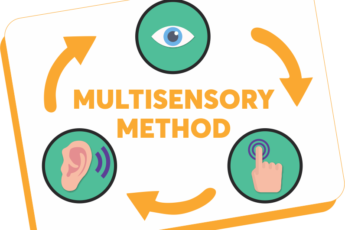The Role Of Public-Private Partnerships In Early Childhood Education

What Is Public-Private Partnership?
Public-private partnerships (PPPs) are collaborations between the public and private sectors with a focus on system efficiency, cost-effectiveness, innovation and accountability. In a PPP, the private sector provides infrastructure, assets and services that were otherwise provided by the Centre. An innovative idea to tap private resources, the PPP model looks at encouraging the private sector to participate in national development. We see successful examples all around us, in infrastructure, energy, communication, airports, and more.
The NEP 2020 addresses a wide range of reforms aimed at increasing enrolment and retention while making Indian education broad-based, skill-oriented and contemporary with potential to unlock a part of the demographic dividend in India. With the allowance for 100% FDI in the education sector, there have been numerous initiatives from the Centre and State governments to develop the Early Childhood Care and Education (ECCE) landscape further.
Why Does Early Education In India Need The PPP Model?
Currently, in India, there are around 240 million children under the age of 8 who can benefit from equitable access to good quality education. At present, we can divide them into Metropolitans, Tier 1, Tier 2, and so on. The other parts of the ECCE ecosystem, like the anganwadis, the schools, are just as many. Implementing any sort of program is not a task for a single entity to accomplish easily, whether it is a public concern or a private organisation. A public-private partnership speeds up this process, reducing the time taken. As a result, the implementation itself speeds up. The PPP model is critical to see a better and larger impact across the spectrum: young learners benefit from early implementation, it affects future learning, and the economy and future of the nation are also impacted.
As we cannot have a one-size-fits-all approach to implementation, and as each state presents its own sets of challenges and opportunities, partnering with another concern, one that shares a common vision to create an increasingly literate India, is more a necessity than a want.
Strategic Advantages To Adopting The PPP Model:
Well-designed public-private partnership models can help the government effectively implement the NEP 2020’s vision. The key benefits to such a partnership would include:
- Equal Access To Quality Early Education: The focus is currently on providing quality in ECCE. A PPP model is key to fulfil goals of reduced resource wastage, lower dropout rate, and reduced absenteeism. Private edtech organisations, by their very nature, are innovative and research-driven. They are scientifically sound, flexible, and can introduce better pedagogies and stronger management techniques to early education. An effective PPP model also helps bring in marginalised sections of the society into mainstream education, fostering inclusivity and breaking geographical barriers.
- Gains From Efficiency: The private sector’s ability to specialise in certain areas equip it with added benefits. Including such partners, with highly specific skill sets, can increase the efficiency across the board, raising the funding, boosting the delivery, and heightening the development of every ECCE stakeholder (Anganwadi workers, pre-primary and primary educators, and children) in the process.
- Innovation, Technology, & R&D: Private edtech organisations, by their very nature, are innovative and research-driven. Most invest heavily in R&D, using technologies like Artificial Intelligence and Machine Learning to enhance their services. This technology brings the edge and innovation needed to keep costs low, improve efficiency and speed of execution.
- Targeted Focus: Private players help the government function effectively across SDGs, streamlining their focus towards a particular sub-specialisation. This helps them impact the last-mile delivery efficiently, with minimal wasted effort.
- Speed Of Implementation: Implementation is key to any structural change. The government should look towards the PPP model for faster and quality implementation of NEP 2020’s vision. PPPs can help extend the reach and effectiveness of government funds, encourage innovation in education, increase safety, efficiency, and capacity of physical educational infrastructure, and given the right public policy context, extend access to educational services and parity of services received across a population. They allow the government to maintain strategic, financial and regulatory control over public education, allowing them to step back from the day-to-day delivery and management of the infrastructure and/or service in situations where their resources are limited.
- Accountability: “The private sector is built on accountability. This is where the biggest part of the PPP model can impact early learning, by bringing accountability into the public framework, and impacting learning outcomes.”, says Square Panda India MD, Mr. Ashish Jhalani, in an excerpt from our upcoming round table discussion on ‘Role of Public Private Partnerships in Innovation and Implementation of NEP 2020’.
*The fourth episode of our #EarlyLearningMatters series is airing this Saturday and Sunday, only on the Times Channels.

- Effective Service Delivery: A responsive and effective service delivery framework depends on the right combination of supply and demand, alongside a robust governance framework, that can help resources flow right down to the local levels. Most private partners, especially those in early education, are always engaged in continuous improvement of their services, and believe in keeping a high quality standard, delivering programs that efficiently impact every stakeholder in the ECCE ecosystem.
Partnerships and wide scale collaborations with educationally inclined companies, foundations, and governments can bring in the necessary innovation and tools that can turn the NEP 2020 vision into a reality.
Square Panda India’s early learning initiative, ‘Aarambh’, as the name suggests, aims to holistically develop the ECCE ecosystem, which includes the Anganwadi workers, ECCE educators, and the children. Through this initiative, Square Panda India works closely with government schools, communities and organisations across the grassroots levels, to provide NEP 2020-focused foundational learning and educator empowerment programs. Aligning all the stakeholders towards a common goal, Square Panda India is dedicated to transform the Indian early learning space, by up-skilling Anganwadi workers, empowering ECCE educators, and providing foundational learning to the children.
Reasons Square Panda India Is The Perfect Partner For ECCE Development Across India:
- We are geared towards inclusive growth.
- We invest heavily in innovation and R&D.
- Our NEP 2020-aligned curriculum is designed by an in-house team of ECCE experts with a collective experience of more than 50 years in this domain.
- We upskill educators and students with technological knowledge, helping them acquire important 21st century skills.
- We facilitate impact measurement at the core of each program, for timely interventions.
- We conduct regular self-audits, allowing for course corrections.
- Each of our programs is customisable as per the state’s requirements.
An effective and well-designed public-private partnership has the potential to take teaching beyond the classrooms, and give teachers the tools to impact the child in all aspects of their lives. We at Square Panda India believe investing in PPP is a very strong strategy to accelerate development in the Indian early childhood education sector.




Leave a Comment